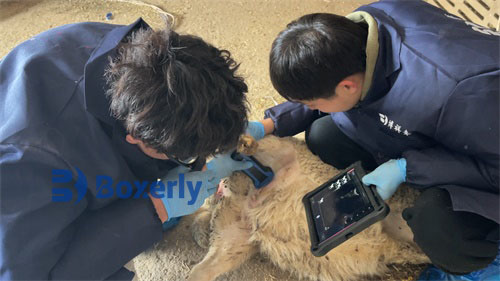Vitamin A is a necessary vitamin for maintaining the reproductive function and embryonic development of cattle. Since vitamin A can ensure the integrity of the placental epithelium of cattle, when vitamin A is deficient, the uterine mucosa and chorionic epithelial cells keratinize and fall off, and the placenta degenerates, leading to miscarriage.
The uterine mucosal layer of cattle can be seen to be not smooth on imported cattle B-ultrasound, and cases of follicular cysts are often found on imported cattle B-ultrasound, and the conception rate decreases. When the vitamin A in plasma is higher than 0.40ug/ml, the reproductive disorder of dairy cows is reduced and the conception rate is higher; while it is not pregnant when it is below 0.15ug/ml. After feeding or injecting VA to sows deficient in vitamin A, the number of piglets born in their litters increased by 0.7 or 1.6 piglets compared with the control group. Oral administration of VA, VE, etc. to sows from 1 week before to 1 week after delivery will also show an increase in the number of piglets born in the litter when B-ultrasound examination of imported cattle is performed.
The most basic function of vitamin D is to promote the absorption of calcium and phosphorus and regulate the levels of calcium and phosphorus in the blood. Vitamin D has no direct effect on animal reproduction, but affects the reproductive function of animals by participating in the metabolism of calcium and phosphorus. Vitamin D supplementation can increase the conception rate of cows and may make estrus symptoms obvious. However, when the follicles of imported cows were examined by B-ultrasound, the follicles did not change much. In addition, vitamin D supplementation can shorten the first estrus time after delivery and the calving interval. Some people have proved that vitamin D can promote the absorption of Be, Co, Fe, Sr, Zn and other elements.








